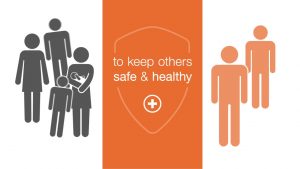A comprehensive public health plan
Posted on May 29, 2020 in Capitol Connection, Featured
Isolating those who test positive for COVID-19 is part of the strategy to prevent further infection.
Testing. Contact tracing. Isolation. Sentinel surveillance. How do they all work together to control the spread of COVID-19? “They’re all tools in a toolbox — part of the bigger effort to protect the community,” said Dr. Sarah Park. The state’s comprehensive approach — together with the community’s own precautions — is keeping the case count low and offering a roadmap for how to help Hawai‘i weather the COVID storm.
Testing: Hawai‘i leads the way among states – Hawai‘i is one of only nine states that have exceeded testing minimums to begin to reopen, according to a recent study by the Harvard Global Health Institute. “To prevent outbreaks from flaring up, they advised to, first, test all symptomatic people, then reach out to their close contacts, and require those who are infected or exposed to isolate themselves” — strategies the DOH is following.
Contact tracing and isolation: Building the army – A new partnership with the UH system will expand the workforce for “surge capacity.” The plan is the brainchild of Dr. Park and Dr. Aimee Grace, who leads the UH’s UHealthy Hawaii Initiative. The goal is to train as many as 300 contact tracers in two to three days, or two to three months, depending on their medical and educational backgrounds, as well as 100 community health workers. Anyone interested can visit go.hawaii.edu/AQX or email [email protected].
“We’re increasing our capacity for contact tracing so we’ll have a ready workforce,” said Dr. Park. “We’re also “surging from within,” bringing in public health nurses and others within the health department as needed.”
Sentinel surveillance: How does it help? –“The surveillance system allows us to see the potential scope of the disease and where it may have penetrated in the community,” said Dr. Park. “Early on, we saw more regional spread of COVID-19, but now it’s just isolated pockets.” Park said the DOH is aggressively seeking new health care providers to add to the surveillance network. “The more providers involved, the more patients who can get tested and the better our system is to be our eyes on disease activity,” she added.